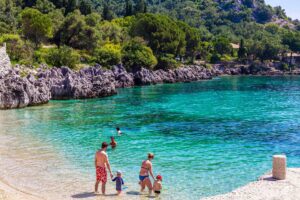Vietnam is a country of stunning landscapes, rich history, and vibrant culture. Planning a holiday in Vietnam requires careful consideration of the best time to visit. This guide will help you choose the ideal season for your trip, ensuring you make the most of your experience.
1. Understanding Vietnam’s Climate
Vietnam’s climate varies significantly from north to south. The country experiences three main climate zones: the north, central, and south regions. Each region has its unique weather patterns, so understanding these can help you decide when to visit.
2. Northern Vietnam: Hanoi and Ha Long Bay
Northern Vietnam, including Hanoi and Ha Long Bay, has four distinct seasons. Spring (March to April) and autumn (September to November) are the best times to visit. During these months, the weather is mild and pleasant, with temperatures ranging from 15 to 28 degrees Celsius. This is perfect for exploring the historic streets of Hanoi and cruising on Ha Long Bay.
3. Central Vietnam: Da Nang, Hoi An, and Hue
Central Vietnam, featuring cities like Da Nang, Hoi An, and Hue, has a tropical climate. The best time to visit this region is from February to May. The weather is warm but not too hot, making it ideal for beach activities and sightseeing. Avoid visiting during the rainy season from September to November, when the region experiences heavy rains and occasional typhoons.
4. Southern Vietnam: Ho Chi Minh City and the Mekong Delta
Southern Vietnam, including Ho Chi Minh City and the Mekong Delta, has a tropical climate with two main seasons: dry and wet. The dry season, from December to April, is the best time to visit. The temperatures range from 25 to 35 degrees Celsius, and the humidity is lower. This season is perfect for exploring the bustling streets of Ho Chi Minh City and the lush landscapes of the Mekong Delta.
5. Exploring Vietnam’s High Season and Low Season
Vietnam’s high season for tourism is from November to April. This period attracts many visitors due to the favorable weather conditions across the country. Hotel rates and flight prices tend to be higher during these months. If you prefer fewer crowds and lower prices, consider visiting during the low season from May to October. However, be prepared for hotter weather and occasional rain showers, especially in the central and southern regions.
6. Best Time for Festivals and Cultural Events
Vietnam is known for its vibrant festivals and cultural events. Tet, the Vietnamese Lunar New Year, is the most significant festival, usually occurring in late January or early February. This is a unique time to experience Vietnamese culture, but be aware that many businesses close during the festivities. The Mid-Autumn Festival, held in September, is another fantastic time to visit, especially for families.
7. Special Considerations for Outdoor Activities
For outdoor enthusiasts, the best time to visit Vietnam depends on the activities you plan to do. Trekking in the northern mountains, such as Sapa, is best from September to November and March to May. These months offer clear skies and comfortable temperatures. For beach lovers, the central and southern coasts are ideal from February to August.
Conclusion
Choosing the best time to visit Vietnam depends on your preferences and planned activities. Whether you prefer the mild weather of spring in the north, the sunny beaches of central Vietnam, or the dry season in the south, there is a perfect time for everyone. Understanding Vietnam’s diverse climate ensures a memorable and enjoyable holiday.





